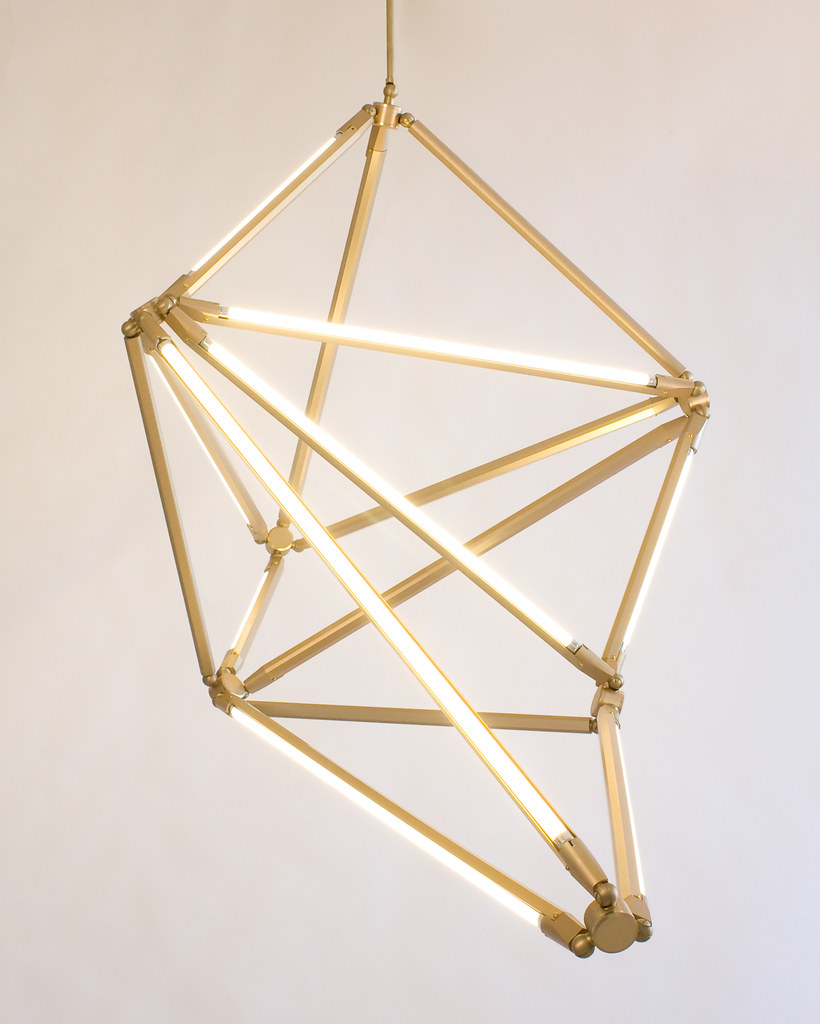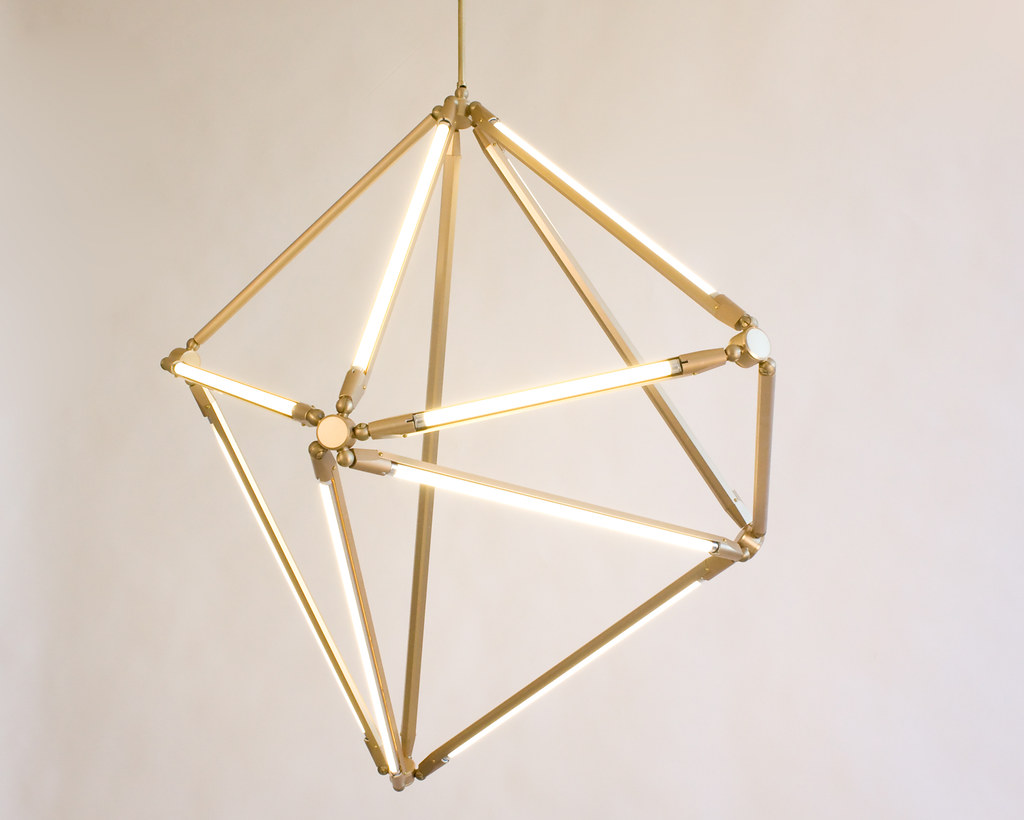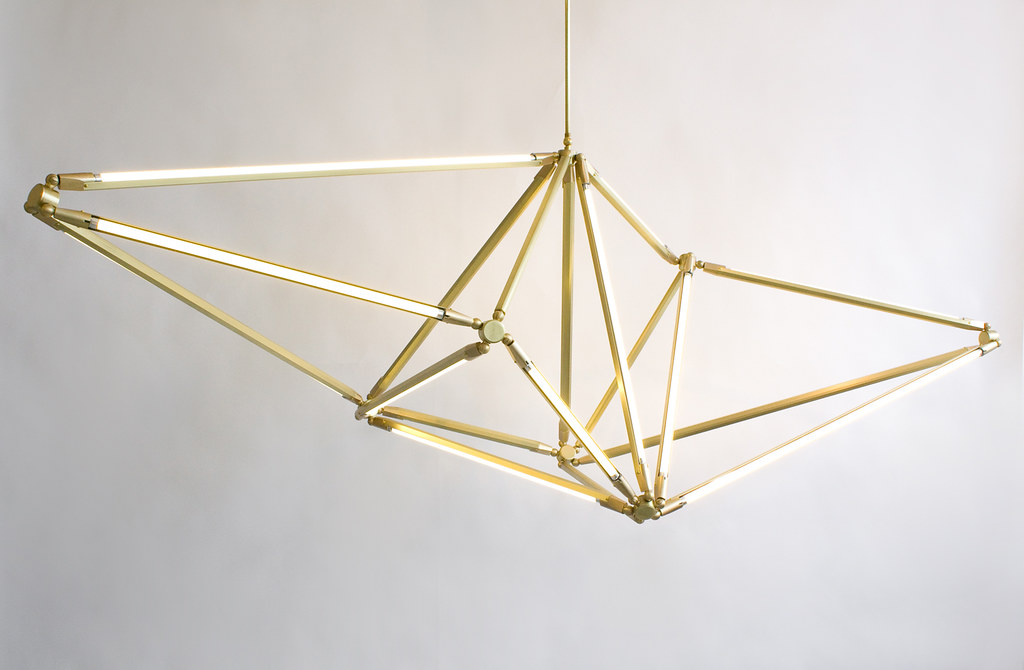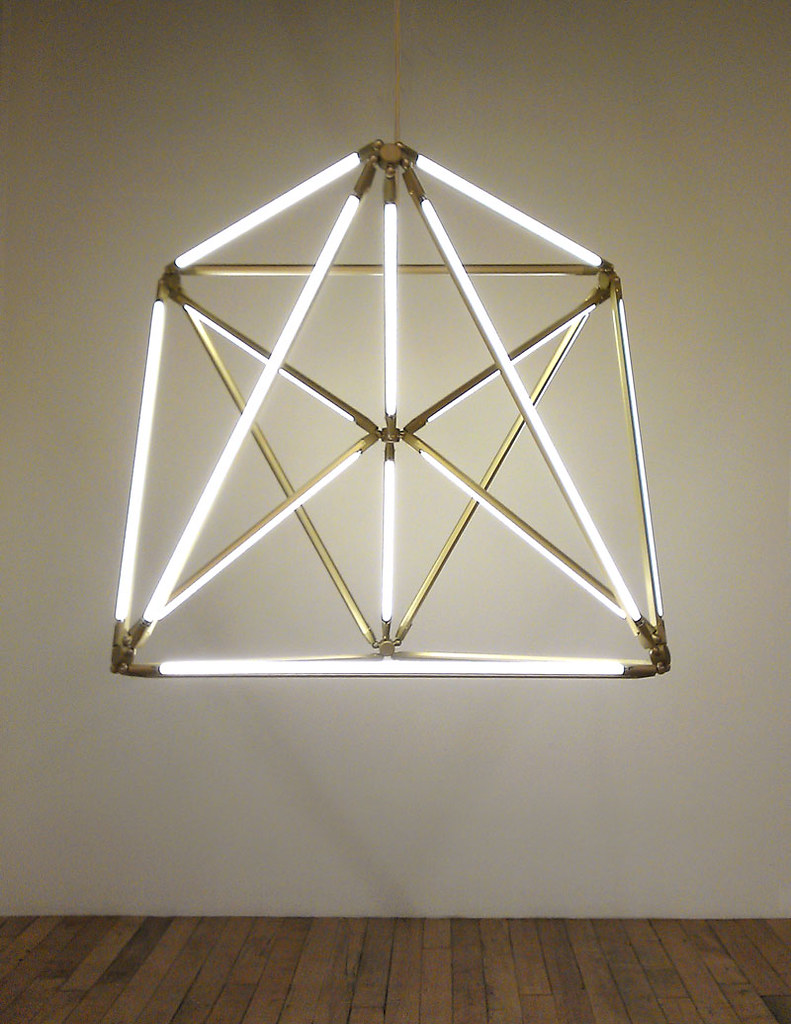"The growth of crystals in entirely compelling to me – growth in a non-living thing is absolutely amazing! Moreover, it's fascinating the way each mineral has its specific growth structure which is consistent, yet depending on environmental variables each specimen is unique. "
- Bec Brittain
Bec Brittain's "the SHY Polyhedron light "
Bec Brittain's latest sculptural lighting work "the SHY Polyhedron light " will be part of MAISON- OBJECT in Paris at American Design in Paris, presented by Triode Design, opening this week, January 22nd. For those in Paris for Maison, visit this collection of American Designers, pushing design + objects into the future.
When in conversation with Bec Brittain about her latest work, she told me that "the Polyhedron brings a few ideas to the SHY light system that I hadn't played with before. The lights begin as a burst in the center, as opposed to only forming the perimeter, a burst of brightness." The more I stare into her works, the more I get lost in their subtle, shape-shifting geometry. Pulsating light lines, bringing to mind Fred Sanback's yarn works, Brittain's pieces are elegant-light drawings in the sky, collecting the energy of the room, full of purpose and intent.
Bec Brittain is currently working on an as yet unnamed piece (in-house it's called mirror crystal), which utilizes a 2-way mirror. "It's a polyhedron, which when the lights are off it reflects it's surroundings, but once you turn it on there is an infinity affect and you can see through to the many dots of light." This piece will be debuting that at the Architectural Digest Home Show in New York, March 22-25.
- David John

How did you become interested in LED?
"The quality of light", and why your attraction to working in this source? The interest was actually first with fluorescent light; I became really taken by the idea that we were surrounded by these beautiful white lines, yet they had been relegated to the most banal and industrial applications. I wanted to break them out of that role. After much research, and an initial fluorescent prototype, their technical limitations made themselves quite clear; the LEDs are so nice to work with by comparison – the wiring isn't so complicated.
Right now is such a curious time for lighting technology, there are so many concerns: energy efficiency, quality of light, longevity of design, and many times they are in conflict. My first priority is to try to design things that can be passed on to grandchildren, which requires trying to design for future change. My current solution is to always make sure you can change the light bulb; I hope that this allows not only for burnt-out bulbs to be replaced, but also outdated light bulbs to be updated. A lot of LED lights don't allow for it, and I think in 20 years we're going to have a bunch of light fixtures in the trash. As for light quality, I think it's going to be really interesting how things move forward. LED technology is improving daily in terms of its quality of light. But I also think there's a real possibility of our eyes and our tastes adapting to new kinds of light.
I wonder to myself if we're all going to begin to like different colors because of how they appear under new light....
Why do you call it the Shy Light?
My grandmother is a complete inspiration – she has always had a great eye, and continues to do so past 90. She helped brainstorm about the piece, so I thought it only right to give it her initials, SHY, for Sarah Hitchcock Yerkes.

How did the idea for the LED lamps come about? Can you talk about your process, how you are able to conceptualize, all the way to production?
The SHY light was a nice confluence of the long tubular bulbs lending themselves to make these faceted forms which had been stirring around in my head for a while. For any design there are any number of tools I use, and I just try to find the quickest one for the task at hand. I made a ton of sketch models, using tubes and wire and plasticine, to test the overall shape. The first prototype was made with as many ready-made parts as possible, machining just one custom piece. I have continued to improve it in iterations, refining and making new hardware bit by bit. I suppose I'm a bit impatient and need to see the thing in front of me as soon as I can; I certainly prefer improving iterations of something to trying to get it perfect in the computer before doing anything. You can learn so much in the in-between steps.
Is there are connection between your work and Lindsey Adelman's work? How has she influenced your work, and what has it been like working with her?
It's so hard to say how mine and Lindsey's work are connected; I'm so close to both things, I'm not sure I have the best perspective on the final products and their relationship. What is much clearer to me is the process. When I began working with Lindsey I was trying to decide where to put my focus; I have always been connected to the making of things, but I just hadn't found the right fit in terms of how to try and make a living at it.
The 2 most important things I learned from Lindsey Adelman are:
1. You can be a product designer and not make mass-produced items. Instead you make relatively few pieces, mostly by hand, and they will be appreciated by the client.
2. Relax about something being perfect the first time out.
She continues to change and improve her pieces as certain issues pop up. There's a nice balance between making it the best you can at the time and understanding that you can always make it better. My description of how I made the SHY light in iterations is definitely influenced by this attitude.
You were the Lead Designer at architecture firm WORK AC, and then shifted focus to design luxury door hardware for manufacturer H. Theophile. Currently, you are Design Director at Lindsey Adelman Studio while also building your own practice in product design.
Why have you shifted from architecture to product design?
I began studying product design at Parson's in undergrad, and it was ultimately completely unsatisfying. At the time there was such a focus on mass production and saving resources in the production of the piece (flat-packing to save warehouse space, etc.), but there was no focus placed on the idea that something that will last 150 years will be more environmentally and economically sound than the 20 throw-away tables that you could have instead. I felt very outside what I understood to be the product design world. I left that program, and received a philosophy degree before getting the architecture degree; I used both of those degrees to try to solve this issue I had of wanting to make things but not feeling right about putting more stuff into the world. I tried a bit of architecture, a little furniture design, and some hardware. I think it was partly growing up and having more experience, as well as seeing some other product design practices that I admired, which threw me back into what I had wanted to do when I was 18. I also discovered I really like metal.
3 things we might never guess about you?
Don't we all need a bit of mystery? (yes!)
You speak of a more gradual appreciation of a larger idea. What larger ideas is your work moving towards?
The larger idea is specific to each piece. In the case of SHY, my interest in crystalline structures is really at the heart of it. The growth of crystals in entirely compelling to me – growth in a non-living thing is absolutely amazing! Moreover, it's fascinating the way each mineral has its specific growth structure which is consistent, yet depending on environmental variables each specimen is unique. SHY is constructed similarly, in that the hardware sets certain structural rules, yet it can be put together in a number of different ways.

Bec Brittain was born in Washington, DC in 1980, Bec Brittain studied industrial design at Parsons, earned a BA in philosophy from New York University, followed by an architecture degree from The Architectural Association in London.
Brittain's work experience has been similarly varied as her education. She was Lead Designer at architecture firm WORK AC then shifted focus to design luxury door hardware for manufacturer H. Theophile. Currently, she is Design Director at Lindsey Adelman Studio while also building her own practice in product design.
Bec Brittain's work is at MATTER in New York.....and TWENTIETH in Los Angeles.
-------------

